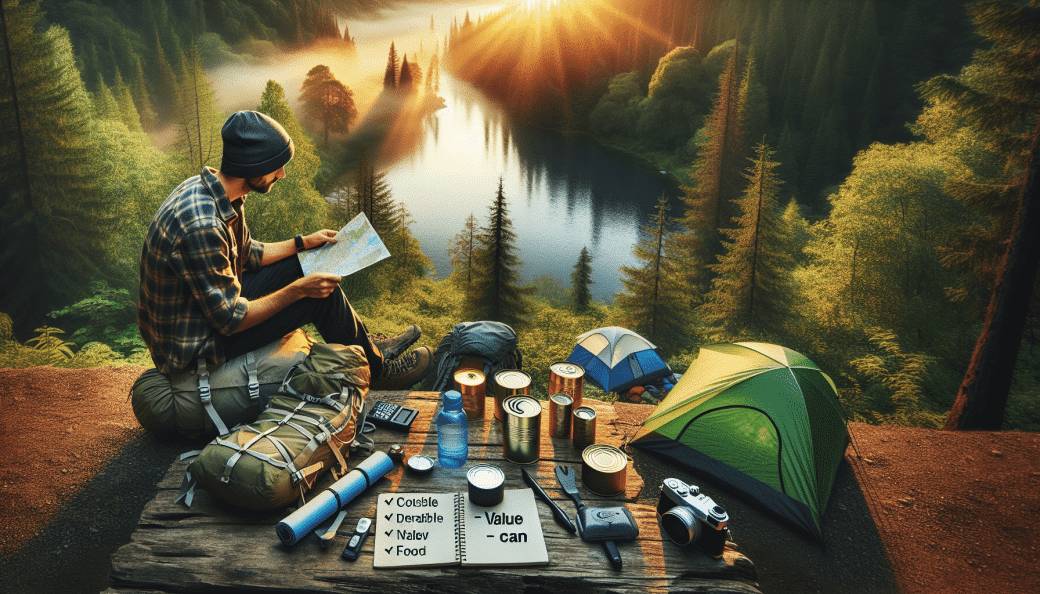Are you an adventurous soul seeking to explore the great outdoors? Look no further, because we’ve got you covered with our trail-blazing tales from thru-hikers. In this story post, we’ll dive into the world of backpacking trail guides and unveil the secrets shared by experienced hikers who have embarked on incredible journeys. Join us as we explore the thrilling and sometimes treacherous trails, and discover the valuable insights and recommendations from these seasoned adventurers. Whether you’re a beginner or a seasoned backpacker, this article will provide you with the inspiration and knowledge you need to embark on your own unforgettable backpacking adventure. So grab your backpack and get ready for an exhilarating expedition through the mesmerizing landscapes of the great outdoors.
Introduction
Are you an outdoor enthusiast looking for a new adventure? Thru-hiking might be just the experience you’ve been seeking. Strap on your backpack, lace up your hiking boots, and get ready to embark on an unforgettable journey through some of the most breathtaking trails in the world. In this article, we’ll introduce you to the world of thru-hiking, discuss the importance of backpacking trail guides, share real-life stories from thru-hikers, guide you on choosing essential gear, provide training tips, offer advice on planning your thru-hike, and discuss the importance of thru-hiking etiquette and Leave No Trace principles. Join us as we dive into the thrilling world of thru-hiking!

What is Thru-Hiking?
Definition of Thru-Hiking
Thru-hiking is a long-distance hiking experience that involves completing an entire trail in one continuous journey. Unlike section hiking, where hikers complete a trail in smaller segments over time, thru-hiking requires sustained effort and dedication. Thru-hikes can range from a few weeks to several months, depending on the length and difficulty of the trail.
Famous Thru-Hiking Trails
Thru-hiking trails exist all over the world, but some trails have become legendary among thru-hikers. The Appalachian Trail (AT), stretching over 2,100 miles from Georgia to Maine, is one of the most iconic and popular thru-hiking trails in the United States. The Pacific Crest Trail (PCT) spans approximately 2,650 miles from Mexico to Canada through California, Oregon, and Washington, offering stunning views of the Western coastline. The Continental Divide Trail (CDT) runs for about 3,100 miles along the spine of the Rocky Mountains, providing a thrilling adventure for those seeking rugged wilderness and pristine landscapes.
The Importance of Backpacking Trail Guides
Ensuring Safety and Preparedness
When embarking on a thru-hike, safety and preparedness are paramount. Backpacking trail guides offer essential information on trail conditions, potential hazards, and necessary equipment. These guides provide hikers with valuable insights into the challenges they may face and help them make informed decisions to ensure a safe and enjoyable journey.
Navigating Challenging Terrain
Thru-hiking trails can present a variety of terrains, from mountains to deserts, forests to river crossings. Backpacking trail guides offer detailed maps, elevation profiles, and trail descriptions that help hikers navigate these diverse landscapes. With this invaluable information at hand, hikers can plan their routes, anticipate challenging sections, and make informed decisions based on their abilities and comfort levels.
Finding Water Sources and Resupply Points
Water is a crucial resource during a thru-hike, and backpacking trail guides often provide information on reliable water sources along the trail. These guides also identify resupply points, where hikers can restock on food and other necessary items. Having this information at hand is essential for hikers to stay adequately hydrated and nourished throughout their journey.

Top Thru-Hiking Trail Guides
The Appalachian Trail Guide
The Appalachian Trail Conservancy (ATC) offers an official guidebook for thru-hiking the Appalachian Trail. This comprehensive guide provides detailed maps, trail descriptions, and information on water sources, shelters, and resupply points. It also includes valuable safety tips and planning advice, making it an indispensable resource for those taking on the AT.
The Pacific Crest Trail Guide
For hikers venturing along the Pacific Crest Trail, the Pacific Crest Trail Association (PCTA) offers an official guidebook. This guidebook covers the entire length of the PCT, highlighting important landmarks, water sources, and resupply options. It also includes updated information on any trail changes or closures, ensuring hikers have the most accurate and up-to-date information.
The Continental Divide Trail Guide
Thru-hikers tackling the Continental Divide Trail can rely on the Continental Divide Trail Coalition (CDTC) for a comprehensive guide. This guide offers detailed maps, elevation profiles, and information on water sources and resupply points. It also provides critical information on permits, regulations, and logistical considerations specific to the CDT, enabling hikers to prepare thoroughly for their journey.
Real-Life Stories from Thru-Hikers
Overcoming Challenges
Thru-hiking is not without its challenges. Inclement weather, physically demanding terrain, and mental fatigue can test even the most seasoned hikers. However, thru-hikers often draw motivation from the sense of accomplishment that comes with overcoming these obstacles. Whether it’s pushing through a blizzard or navigating treacherous river crossings, the stories of triumph and resilience from thru-hikers highlight the indomitable human spirit.
Unique Encounters with Wildlife
One of the remarkable aspects of thru-hiking is the opportunity to encounter wildlife in its natural habitat. From spotting bears and moose along the Appalachian Trail to observing herds of deer and elk on the Pacific Crest Trail, thru-hikers share incredible stories of close encounters with nature’s inhabitants. These encounters serve as a reminder of the importance of preserving and protecting our wilderness areas.
Camaraderie Among Thru-Hikers
Thru-hiking often fosters a strong sense of camaraderie among hikers. The shared experiences, challenges, and triumphs create a bond that transcends boundaries and backgrounds. Thru-hikers form tight-knit communities along the trail, offering each other support, encouragement, and companionship. The friendships forged during a thru-hike often last a lifetime, and the shared memories become cherished stories to be passed down to future generations.

Essential Gear for Thru-Hiking
Choosing the Right Backpack
When preparing for a thru-hike, choosing the right backpack is crucial. A well-fitting backpack with adequate support and capacity will carry all the necessary gear and supplies without causing discomfort or strain. Thru-hikers often opt for lightweight backpacks made of durable materials, designed to withstand the rigors of a long-distance journey.
Quality Hiking Boots
Investing in a pair of high-quality hiking boots is essential for a thru-hike. Comfortable and supportive boots that fit well can prevent blisters, provide stability on uneven terrain, and protect your feet from rugged conditions. Thru-hikers often prioritize lightweight and waterproof boots that can endure the demands of a long hike.
Navigational Tools and Maps
Navigational tools, such as a GPS device or a reliable compass, are essential for staying on course during a thru-hike. Additionally, carrying detailed maps of the trail, either in physical or digital format, can provide a backup in case of technological failure. Thru-hikers rely on these tools to navigate their way through unfamiliar territory, ensuring they stay on track and reach their destination safely.
Training and Physical Preparation for Thru-Hiking
Building Endurance and Strength
Preparing for a thru-hike requires physical conditioning to build endurance and strength. Hikers engage in activities such as hiking, running, or cycling to improve cardiovascular fitness and build leg muscles. Strength training exercises, including weightlifting and bodyweight exercises, help develop the muscles needed to carry a backpack and navigate challenging terrain.
Mental Preparation for Long-Distance Hiking
Thru-hiking is not only a physical challenge but also a mental one. Endurance, resilience, and mental fortitude are essential qualities for a successful thru-hike. Mental preparation involves developing strategies to overcome challenges, managing stress, and maintaining motivation throughout the journey. Thru-hikers often practice mindfulness, meditation, and visualization techniques to cultivate a positive mindset and stay focused on their goals.
Tips for Planning Your Thru-Hike
Choosing the Right Time of Year
Selecting the appropriate time of year for your thru-hike is crucial. Factors such as weather conditions, trail popularity, and personal preferences should be considered. Some trails, like the Appalachian Trail, have peak seasons and busy periods, while others may have specific windows of optimal weather. Thorough research and consultation with experienced hikers can help you choose the best time to embark on your journey.
Budgeting and Resupply Strategies
Thru-hiking requires careful budgeting and planning, as it often involves significant time away from work and expenses for gear, permits, and resupply. Creating a realistic budget and exploring cost-saving measures, such as dehydrating your food or utilizing mail drops for resupply, can help you make the most of your resources. Researching discount programs, sponsoring opportunities, and seeking out community support are additional strategies to consider.
Permits and Regulations
Some thru-hiking trails require permits or have specific regulations in place to protect the environment and manage the flow of hikers. Researching and obtaining the necessary permits well in advance is essential to ensure compliance and access to restricted areas. Understanding and respecting the regulations set by trail authorities and land management agencies helps preserve the integrity of the trail and ensures future hikers can enjoy the experience.
Thru-Hiking Etiquette and Leave No Trace Principles
Respecting Wildlife and Nature
Thru-hikers have a responsibility to respect and protect the wildlife and natural environments they encounter. Adhering to wildlife viewing guidelines, keeping a safe distance from animals, and properly disposing of food waste are crucial practices. Hikers should stay on designated trails to minimize trampling vegetation and disturbing habitats, allowing nature to thrive undisturbed.
Proper Waste Disposal
Leave No Trace principles emphasize the importance of proper waste disposal on the trail. Thru-hikers should carry out all their waste, including human waste, in accordance with guidelines and regulations. Utilizing established latrines or burying waste following Leave No Trace principles helps prevent water contamination, minimizes visual and olfactory impacts, and maintains the pristine beauty of the trail.
Minimizing Impact on Trails
Preserving the integrity and beauty of thru-hiking trails requires minimizing our impact as hikers. Thru-hikers should avoid leaving trash, picking or damaging vegetation, and starting fires in non-designated areas. Respecting trail signage, following established camping guidelines, and sharing the trail harmoniously with other hikers help maintain the trail’s sustainability and ensure future generations can enjoy it.
Conclusion
Thru-hiking offers a unique adventure, allowing you to immerse yourself in nature and push your physical and mental limits. By following backpacking trail guides, preparing with the right gear and training, planning thoughtfully, and adhering to proper etiquette and Leave No Trace principles, you can embark on an unforgettable journey. So, lace up your boots, pack your gear, and set out on the trail with the knowledge, confidence, and respect that come from understanding what it takes to be a thru-hiker. Happy trails!



